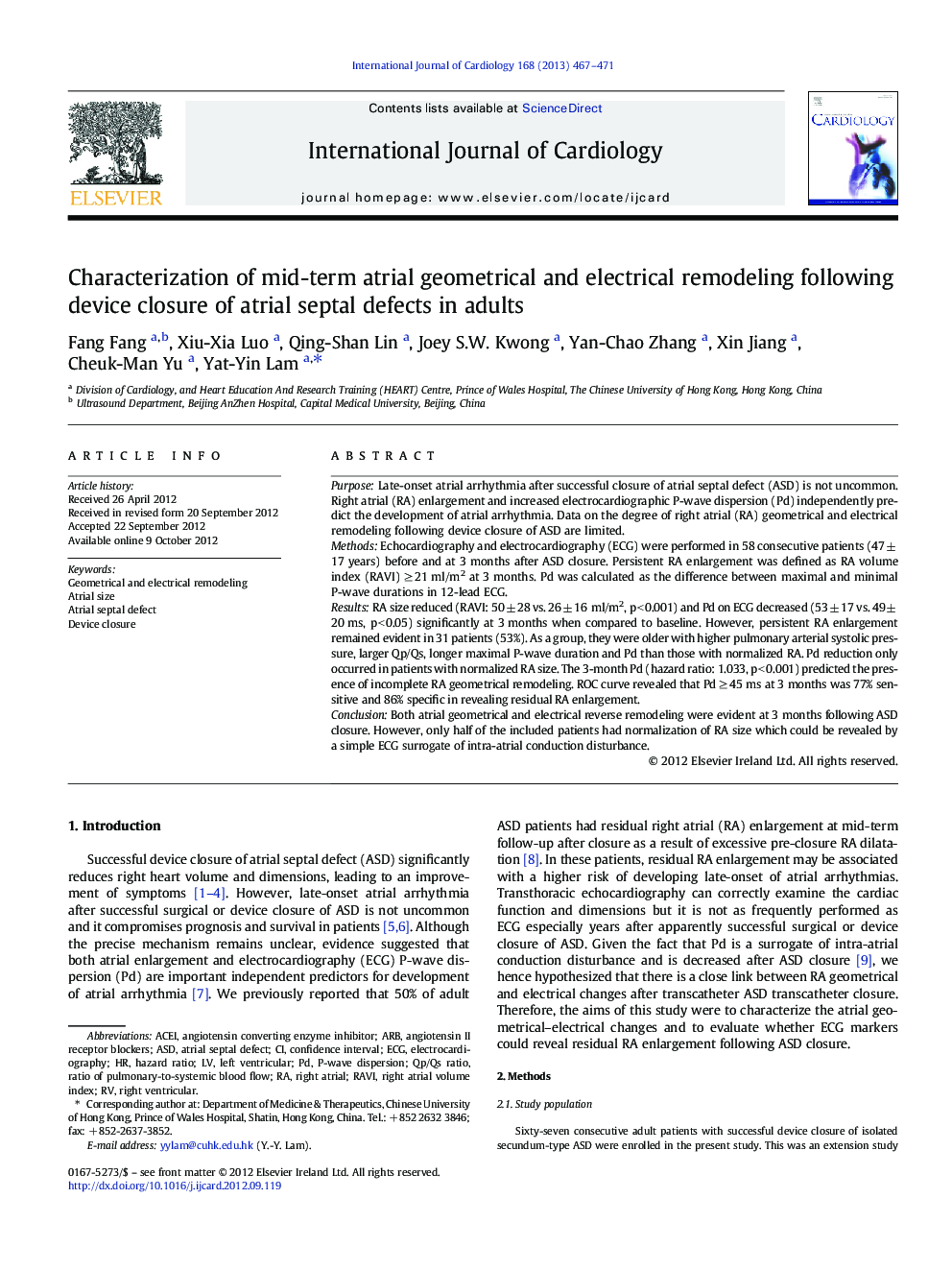| Article ID | Journal | Published Year | Pages | File Type |
|---|---|---|---|---|
| 5976741 | International Journal of Cardiology | 2013 | 5 Pages |
PurposeLate-onset atrial arrhythmia after successful closure of atrial septal defect (ASD) is not uncommon. Right atrial (RA) enlargement and increased electrocardiographic P-wave dispersion (Pd) independently predict the development of atrial arrhythmia. Data on the degree of right atrial (RA) geometrical and electrical remodeling following device closure of ASD are limited.MethodsEchocardiography and electrocardiography (ECG) were performed in 58 consecutive patients (47 ± 17 years) before and at 3 months after ASD closure. Persistent RA enlargement was defined as RA volume index (RAVI) â¥Â 21 ml/m2 at 3 months. Pd was calculated as the difference between maximal and minimal P-wave durations in 12-lead ECG.ResultsRA size reduced (RAVI: 50 ± 28 vs. 26 ± 16 ml/m2, p < 0.001) and Pd on ECG decreased (53 ± 17 vs. 49 ± 20 ms, p < 0.05) significantly at 3 months when compared to baseline. However, persistent RA enlargement remained evident in 31 patients (53%). As a group, they were older with higher pulmonary arterial systolic pressure, larger Qp/Qs, longer maximal P-wave duration and Pd than those with normalized RA. Pd reduction only occurred in patients with normalized RA size. The 3-month Pd (hazard ratio: 1.033, p < 0.001) predicted the presence of incomplete RA geometrical remodeling. ROC curve revealed that Pd â¥Â 45 ms at 3 months was 77% sensitive and 86% specific in revealing residual RA enlargement.ConclusionBoth atrial geometrical and electrical reverse remodeling were evident at 3 months following ASD closure. However, only half of the included patients had normalization of RA size which could be revealed by a simple ECG surrogate of intra-atrial conduction disturbance.
